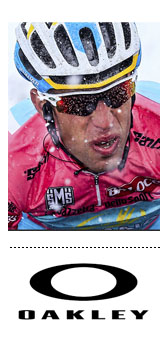 For most brands, the holiday season is a discount deluge. Not so much for high-end sports and eyewear maker Oakley.
For most brands, the holiday season is a discount deluge. Not so much for high-end sports and eyewear maker Oakley.
“We’re not a highly promotional brand,” said Krysta Brown, the company’s director of online marketing.
Oakley might participate in seasonal promotions so long as they’re “brand right” and don’t undermine its messaging around premium, high-quality products. But while Oakley might not be tossing around 50%-off coupons like stocking stuffers, it’s definitely thinking about performance marketing, which is Brown’s purview.
Like other brands, Oakley divides its marketing activities by channel. Brown manages retail, commerce and overall brand awareness through paid search, SEO, affiliate marketing and display.
“I work on any tactics that are ROI-driven and performance-based,” she said. “Ninety percent of what I do is direct response, and 75% of that is to drive ecommerce.”
That mostly means getting people to buy through Oakley.com. While the manufacturer’s Italian parent Luxottica owns numerous other sunglass brands and retail outlets, such as Sunglass Hut, Brown only focuses on Oakley’s sites and retail stores. Oakley doesn’t have the visibility into its sister companies to support driving advertising to other Luxottica sites, though that’s a possibility. Many Luxottica brands work with the same vendors, which would make data-sharing easier should that ever top the agenda.
While Oakley works with its digital agency of record iProspect for most of its performance marketing channels, it maintains a direct relationship with Steelhouse for its display retargeting.
“Having a digital agency of record enables data sharing capabilities across channels,” Brown said. “That agency understands how customers interact and how they’re crossing over in multiple channels. That’s a huge value-add.”
The reason display is different is simple: Brown is comfortable with the direct relationship she’s had with Steelhouse since Oakley began using it in 2012, after Oakley’s previous agency a bakeoff between Steelhouse and another retargeter.
“The ease of managing the campaigns and the partnership with Steelhouse means it doesn’t make sense to use an agency, which would then use Steelhouse to run our campaigns,” Brown said.
Because Steelhouse has a heavy services component along with its ad stack, having an agency manage that relationship would result in a game of telephone.
“They’d just recommunicate stuff to Steelhouse,” Brown said. “Rather than having that middle man, I just communicate my goals directly to the Steelhouse team.”
Display is also a little unusual for Oakley in how it’s categorized. Oakley’s marketing organization is aligned based on channels and goals. Paid search, for instance, runs through Brown whereas channels associated with branding generally fall under Oakley’s media team.
But Brown occasionally finds herself helping support Oakley’s broader branding efforts. Paid social and display often straddle that divide. As Oakley tries to move upper-funnel customers down the path to purchase, Brown helps layer in strategies that assist with sequential messaging.
To date, Brown’s Steelhouse-powered display strategy is focused on retargeting, and she’s especially interested in reaching people who hit multiple product pages but don’t buy. That’s a big, blinking intent signal that deserves some serious DR messaging. By contrast, customers who only hit the front page or a single product page before bouncing typically get retargeted with a brand awareness campaign.
“We have a lot of different segments running through Steelhouse,” Brown said. For instance, Oakley, though known for its eyewear, also has other apparel. Prospects hitting the company’s golf collection, for instance, will naturally get different messaging than those who are digging into its cycling sportswear.
But Brown has plans to push Oakley’s digital marketing to new levels in 2016. For one, she wants to test lookalike modeling for prospecting. She oversaw such an effort a few years ago with a previous agency, but the ROI didn’t justify the tactic. “It’s something we’re testing again in 2016, using Steelhouse’s technology.”
She also hopes to do more in social commerce. Recently, Oakley launched a Facebook program using the social network’s Dynamic Product Ads, but wanted to do retargeting to supplement it.
“We wanted to do that for a while,” Brown said, but the process integrating social with the product feed was time consuming. “Steelhouse let us do it quickly.”
Those efforts will continue in 2016, and Brown wants to see even more social alignment and integration, particularly with brand and direct response initiatives.
And while Facebook has been the best social commerce performer, Brown is exploring other social channels. Oakley continues to test on Twitter and is running a Curalate solution for Instagram called Like2Buy. Brown is also looking to get more involved with Pinterest, which she hasn’t done yet mostly due to bandwidth and because that channel is largely overseen by Oakley’s social team.
And there’s another big New Year’s resolution: being able to tie online activity to in-store purchasing.
”We can’t connect a consumer who clicked on a paid search ad or display banner to someone walking in the door and converting,” Brown said.
While technologies like LiveRamp can assist, certain prerequisites must be met for them to perform optimally.
“The consumer has to have a Google account, it has to be turned on when they click and we have to capture their email at the point of sale,” Brown said. “There’s a small percentage of consumers you can attach that to. If there’s a way for us to connect a digital consumer to a person walking into a store without having to have X, Y and Z turned on and captured, that’d be ideal.”














